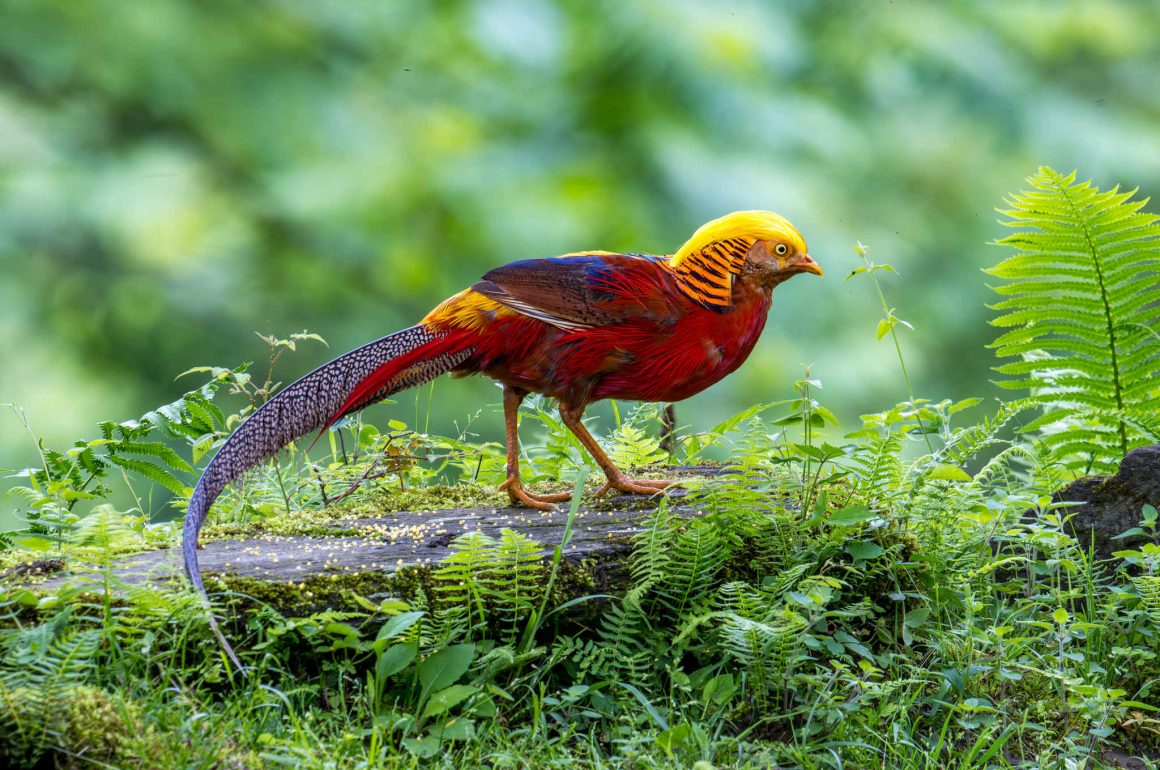
Golden Pheasant is a Chinese restaurant in Torrance, California that “offers a plethora of dining options … Not only is the food top-notch, but the service is exceptional, as noted by numerous satisfied customers. Reviews praise the generous portion sizes and affordable prices … Golden Pheasant is a must-visit for anyone craving authentic Chinese cuisine in a welcoming atmosphere.”
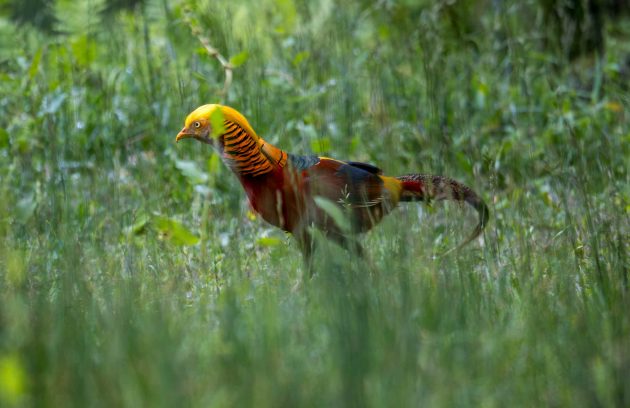
Alternatively, you may want to check out the Golden Pheasant Inn, which (in Erwinna, Pennsylvania) offers “A Taste of France in Bucks County”, notwithstanding the fact that the Golden Pheasant has nothing to do with France, nor with Pennsylvania. But to quote Nirvana, “Nevermind”. Other places named after the Golden Pheasant include golf courses and steak houses.
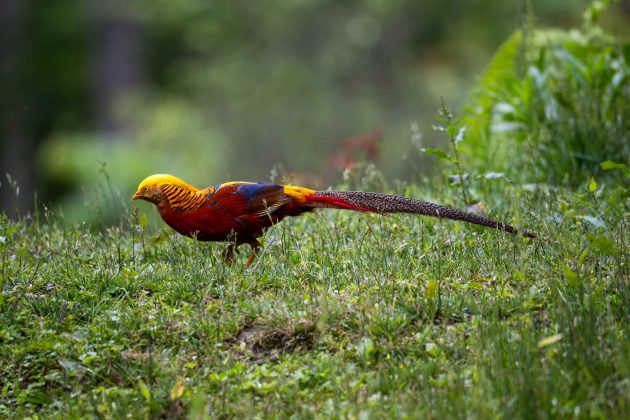
Anyway, 10,000 Birds is not a restaurant review site but a birds/birding blog. So, the topic of this post is Chrysolophus pictus, the Golden Pheasant (bird species, not Californian or Pennsylvanian restaurant). Please adapt your expectations accordingly. Photos in this post show birds, not Chinese or French-inspired dishes.
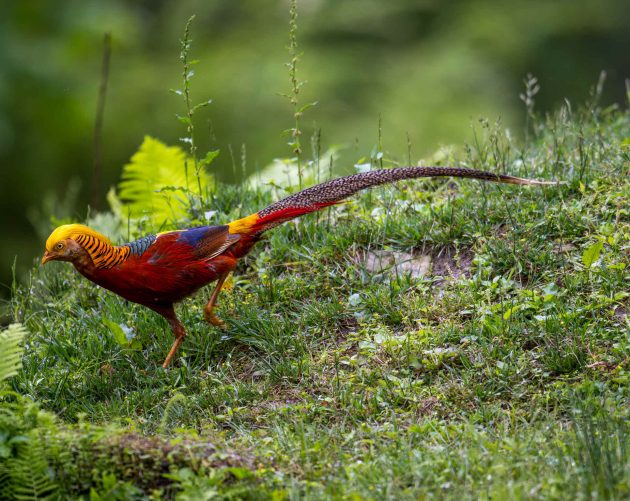
Those who learned some Latin at school (I did – I know it is pretty useless, but it served me well) may know that pictus does not mean “golden” (that would be aureus) but rather “painted”. I hope the photos show that this scientific name is quite reasonable.
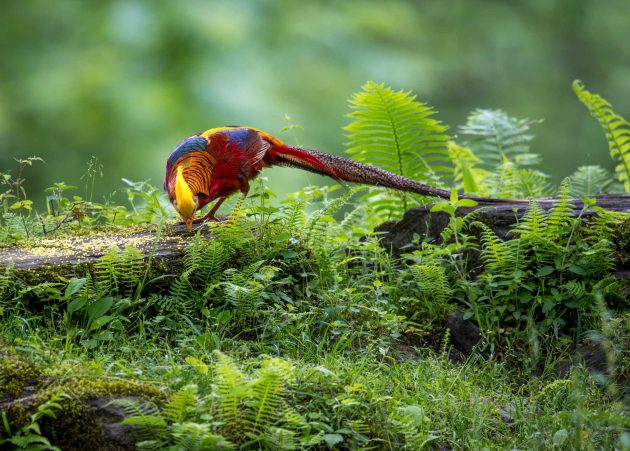
Why are the males so colorful? One paper suggests that “different components of plumage color correlated with the length of the body, tail, spur, and beak, suggesting that the multiple colors in male golden pheasants signal different components of body quality”. So basically, if a male Golden Pheasant has the right colors, it also has good genes – helpful information for the discerning female.
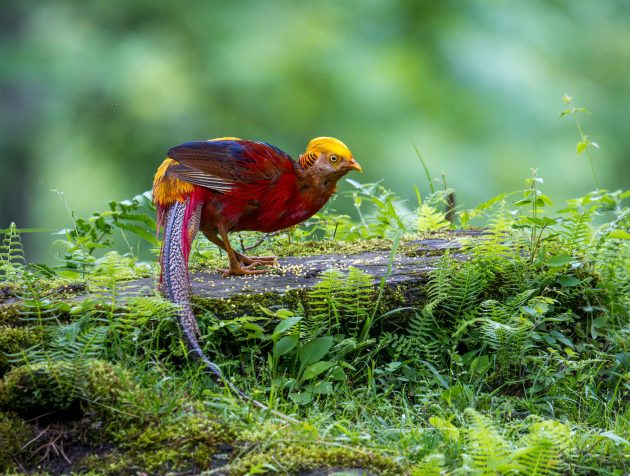
According to the HBW, the species “hardly ever flies”, instead preferring to run away from danger. Seems like a weird choice to me, but maybe the inspiration for the Gary Larson cartoon?
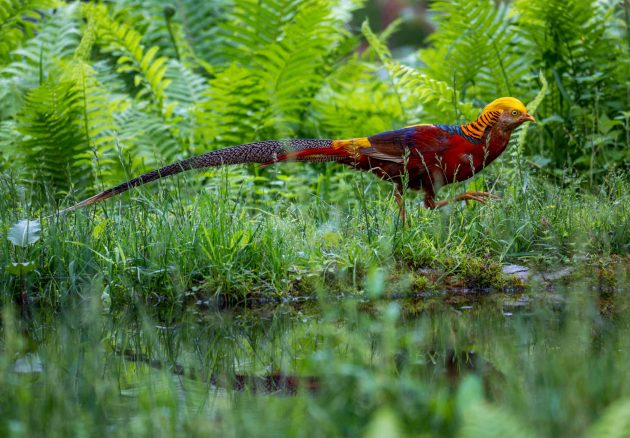
For some reason, the Golden Pheasant seems to be particularly interesting to veterinary scientists. This results in papers with titles such as “Electrocardiogram analysis of the Golden (Chrysolophus pictus) and Silver (Lophura nycthemera) Pheasants” or “Muscle architecture of the forelimb of the Golden Pheasant (Chrysolophus pictus) and its implications for functional capacity in flight” or “Forelimb Myology of the Golden Pheasant“. And no, I am not going to summarize these papers for you – I’m already weirded out by the titles.
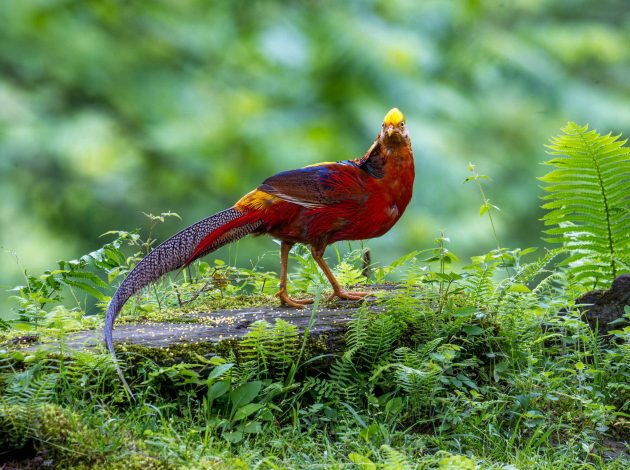
Fortunately, the species is listed as Least Concern, though in some places where the species was introduced, such as the UK, it is now struggling (source).
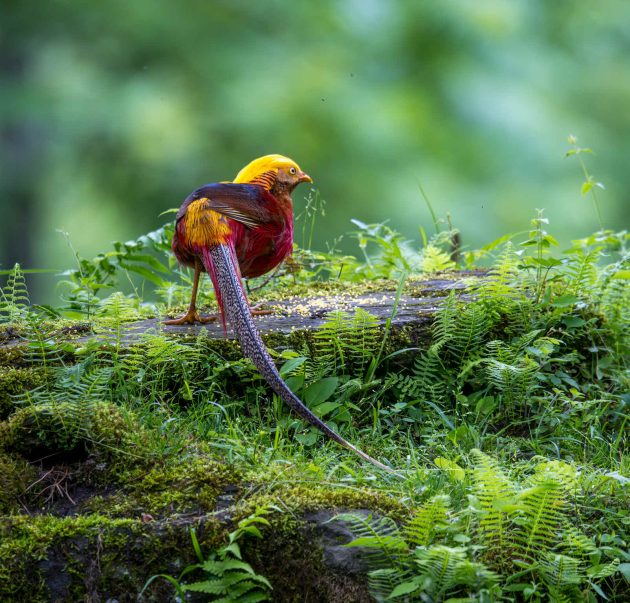
In Sweden, the first Golden Pheasant showed up in the mid-1740s – a male Golden Pheasant also kept by Princess Louisa Ulrika at her estate outside Stockholm. When it died, it was given to Carl Linnaeus, who gave it a scientific name (source). I know that this is largely irrelevant information, but what would we do without irrelevant information with our longish lives? Without TV series such as The Sopranos or The Wire, even?
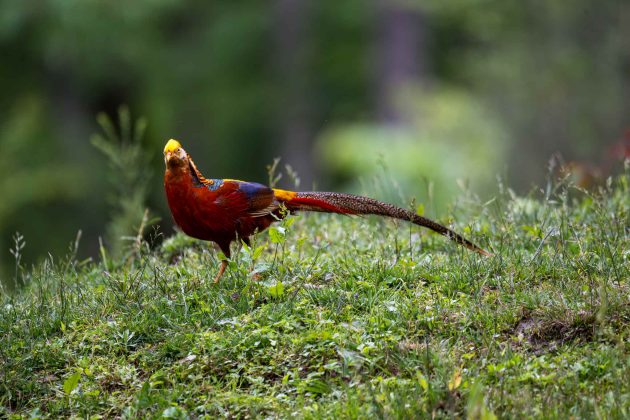
Much like me, female pheasants are not too fond of humans. A study conducted at the University of Haripur’s pheasantry in Khyber Pakhtunkhwa, Pakistan (an unlikely place for a pheasantry, if you ask me, but you probably will not), found that female pheasants, including Golden Pheasants, are disturbed by visitors and change their feeding and hiding behavior accordingly.
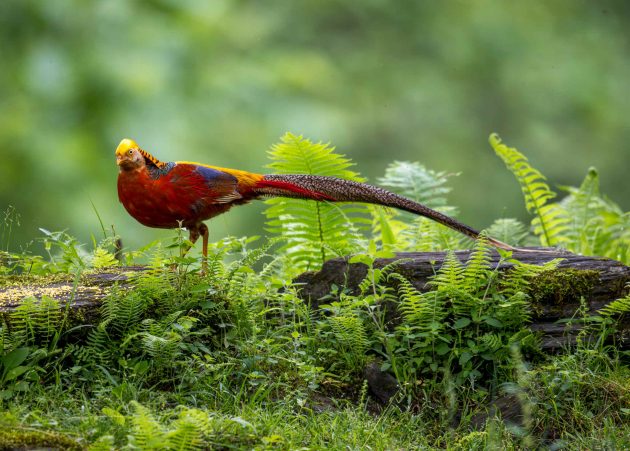
Does your wife ever tell you to eat more vegetables? Mine certainly does, though it is a tough fight as I don’t like vegetables very much. Perhaps I should learn from research done on female Golden Pheasants. They were found to have improved egg production upon the incorporation of 5% green vegetables in the diet. Then again, I may just tell my wife I have no desire to produce eggs.
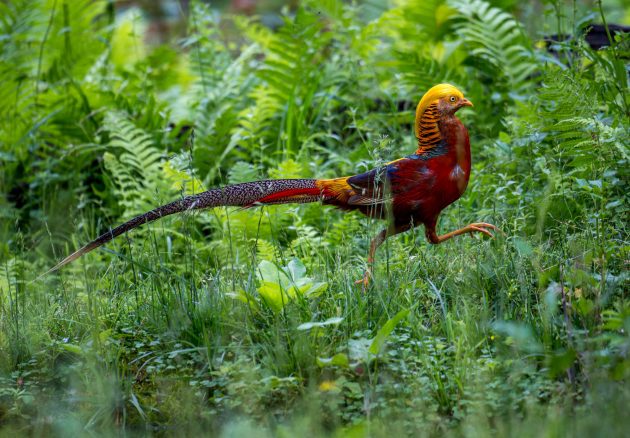
Photos taken at Wenchuan, Sichuan on June 01, 2025


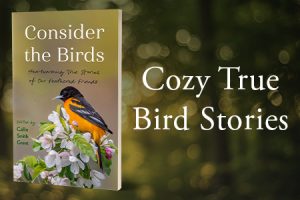

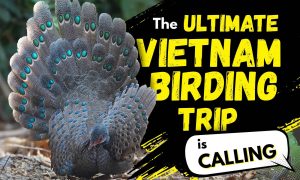
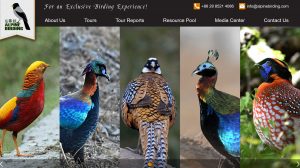


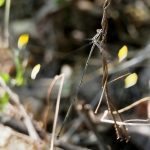
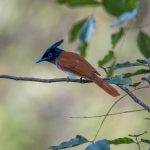

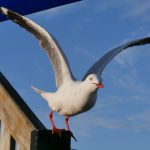
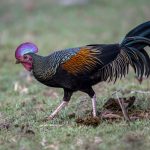
Another mythical bird… I know the Golden Pheasant exists because I have seen it in a zoo (unlike the pitta, which can still be AI-generated as far as I am concerned) but I really would like to see it in the wild. I will eat my veggies if that’s what’s needed but I will stop short of producing eggs.
We used to have a healthy (introduced) population here in the Brecks in England. They were challenging to see, but much easier to hear. Sadly, for this was one of the few introduced birds that seemed to have little or no impact on its environment, they have now virtually died out. I haven’t seen one for at least 15 years. Beautiful birds.